
Mirri (Vanguard) | Illustration by Richard Kane Ferguson
Before Commander, before Oathbreaker, before even Archenemy, there was Vanguard. This is one of the oldest casual formats, and a progenitor to the character-focused casual variants we see today.
Vanguard was introduced at events in 1997 as a casual variant format where a player chooses a single vanguard card representing a character from the Magic universe to lead their Constructed deck. But what are these cards, and how do they work?
Let’s dive in and find out!
What Are Vanguard Cards?
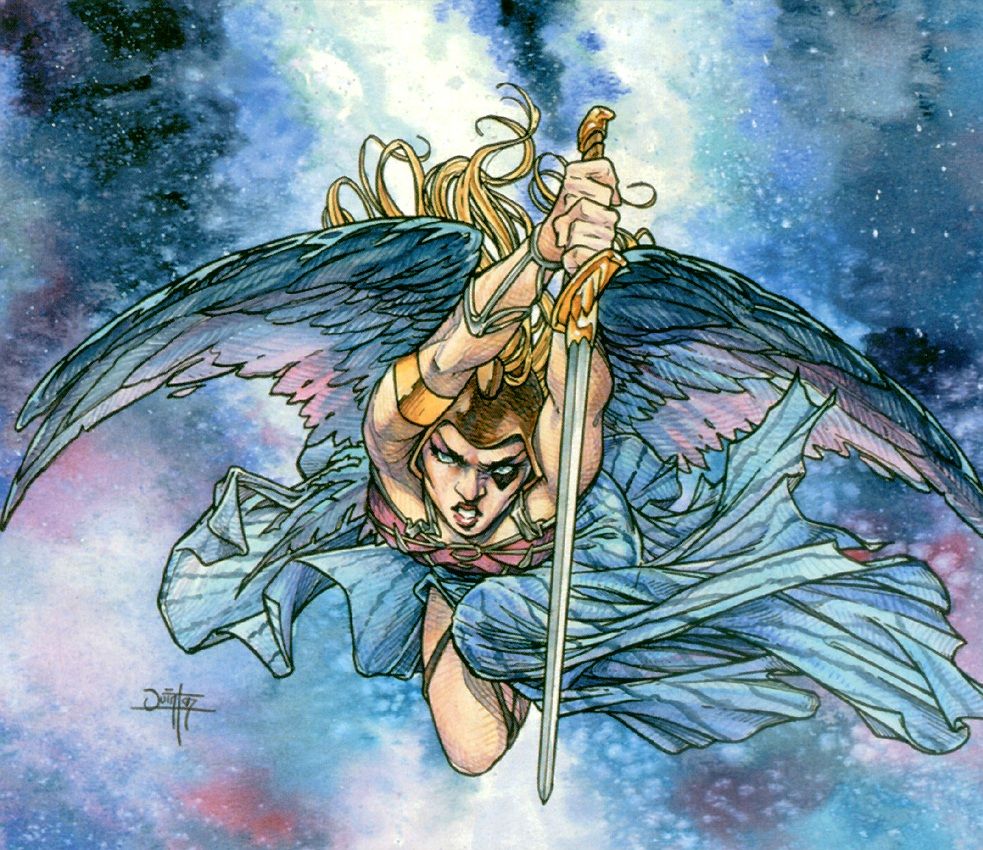
Selenia (Vanguard) | Illustration by Quinton Hoover
Vanguard cards are oversized Magic cards that aren’t played like regular cards. Each one features a portrait of a famous MTG character and a text box with their abilities and a mountain of flavor text.
Vanguard cards were released in four series of eight cards each. Starting in May 2005, MTGO began releasing vanguard avatars as digital-only releases and continued until Zendikar’s release in 2012. These digital-only vanguards are referred to as “avatars” on Magic Online. They replace your character portrait and even show signs of damage as you lose life.
Each vanguard card denotes its starting and max hand size modifiers in the left corner, as well as its starting life modifier on the right. The text box includes its effect, usually short enough to allow for a full paragraph of flavor text (Vorthos rejoice!)
How To Play Vanguard Cards
Vanguard games are played in much the same way as traditional constructed Magic duels. Any vanguard card can be selected as the “companion” or “commander” (whichever analogy works best for you) of a traditional 60-card Constructed deck, with no limitations on color identity. Okay, except for Ral's Vanguard, but that’s only playtesting material at this point.
Once you’ve selected your vanguard you’re ready to play! Both players’ vanguards start the game in the command zone and stay in play for the duration, modifying the game’s rules accordingly. Their abilities affect the battlefield as if they weren’t in the command zone. Read as written this is a bit wonky, but mostly this is just a leftover from the days before the command zone existed.
The two most obvious modifiers are hand sizes and starting life. Before initial hands are drawn, add or subtract the modifiers to your starting hand and life totals to find your new starting amount. For example, if I chose Ashnod as my vanguard, I’d draw a starting hand of eight cards, down to seven on my first mulligan. I’d also start the game with just 12 life!
Vanguard cards can’t be targeted, attacked, or otherwise interacted with during the duel. You basically just treat them like emblems from planeswalkers.
Are Vanguard Cards Legal in MTG?
Vanguard cards aren’t legal in any DCI-sanctioned formats. They’re meant for casual games of Magic with a fun twist. Use them in your kitchen-table games or add them to your EDH pod to spice things up!
How Many Cards Are There in Vanguard?
There are a total of 32 physical vanguard cards that were produced with the Vanguard box set. An additional 74 digital-only vanguard avatars are available only on MTGO. One final playtest vanguard card was produced as part of the Mystery Booster/The List playtest cards (Ral's Vanguard).
What Size Are Vanguard Cards?
Vanguard cards are the standard oversized Magic card size, meaning they’re 3”x5”.
Are Yu-Gi-Oh and Vanguard Cards the Same Size?
Not to be confused with Cardfight Vanguard, MTG’s vanguard cards are oversized and not the same as a standard trading card size. Cardfight Vanguard and Yu-Gi-Oh’s cards are even a smidge smaller than the standard American trading card size.
MTG cards sit around 2.5”x3.5”, while Yu-Gi-Oh and Cardfight Vanguard cards are typically 2.25”x3.25”. An MTG vanguard oversized card is 3”x5”.
What Sleeve Size Are Vanguard Cards?
Vanguard oversized cards need special sleeves. A lot of retailers sell oversized sleeves specifically fitted to vanguard cards.
If you’re looking for advice on your Cardfight Vanguard cards, rest assured that the standard “Japanese” fit sleeves work best for your cards.
Best Vanguard Cards
There’s a ton of variance in power level when it comes to the vanguard cards and their online avatar contemporaries.
#10. Urza
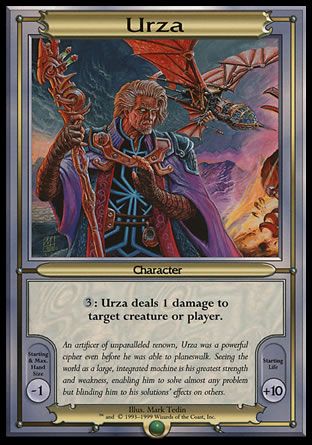
Urza’s biggest boon is its +10 life buff to before the game. Starting the duel with a whole 50% more life than your opponent is a huge advantage, especially given that Urza lets you dump excess or unused mana into direct damage.
This is an easy trade-off for a 6-card start, especially when you’ve built your deck to take that handicap into consideration.
#9. Selenia
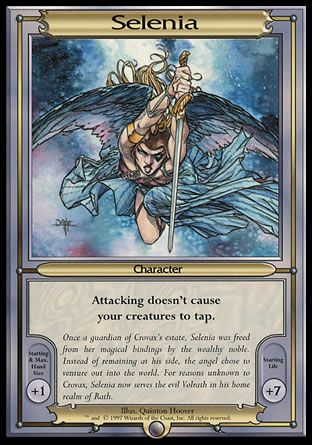
Selenia is another entirely upside vanguard, racking up an extra card in hand, 27 life to start, and gives your entire board non-keyworded vigilance. In a format where value trades matter, Selenia gives you more options and more breathing room to trade up into your opponents’ creatures while protecting yourself from counterattacks.
#8. Titania
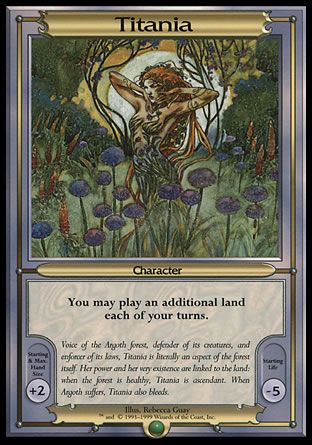
Titania might look like a whiff with its -5 starting life, but the one free land each turn coupled with a bigger max hand size means you’ll be ramping way ahead of your opponents by the second turn.
Worried about that lower starting life? Just win the game before your opponent has a chance to hit you!
#7. Tawnos
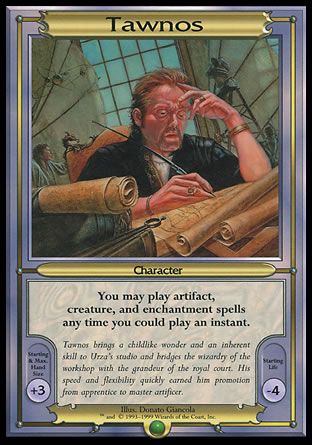
In the same vein as Squee, Tawnos is a Leyline of Anticipation that misses sorceries and planeswalkers but gets you three extra starting cards for your trouble.
“Trouble” is stretching it. Having the most known information before casting a spell is paramount to playing Magic, so Tawnos’ -4 life penalty is a fair trade-off.
#6. Squee
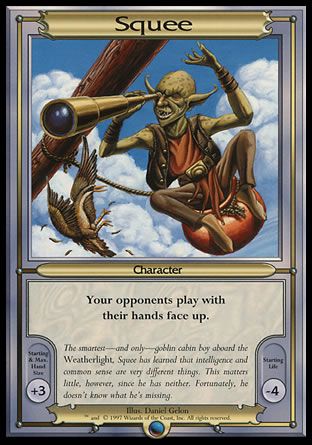
Listen, I’ve had players fold to a turn 1 Telepathy, so the Squee vanguard shouldn’t be dismissed. Knowing what your opponent has in their hand is half the battle, and an extra three cards in your hand makes sure you’re always prepared for what you see coming.
For four less starting life, I’d take a Squee every chance I get.
#5. Sliver Queen, Brood Mother
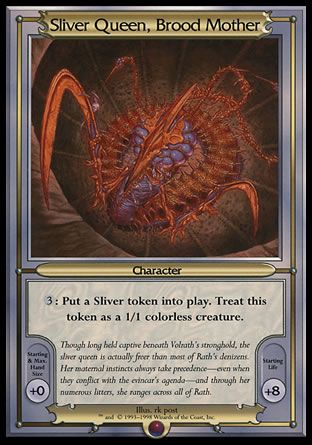
As if slivers needed any more help, the Sliver Queen, Brood Mother vanguard gives you instant access to a token-generating machine and bumps you to 28 life to boot! Need I say more?
#4. Mishra
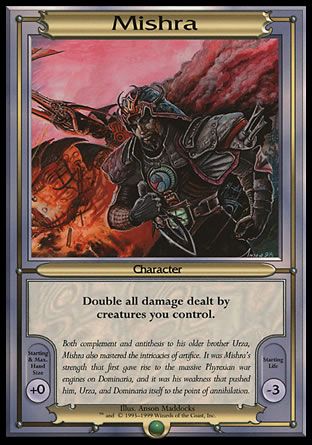
Mishra doubles any damage dealt by creatures you control. Read that again. This vanguard lets you start the game with a one-sided Furnace of Rath, which can get out of hand very quickly.
Hasty creatures with low mana costs and big power make the best use of Mishra’s ability. Unblocked Ball Lightnings or direct damage from Vexing Devil doubles up their output, wrapping up games before they even start.
#3. Gix

If you thought Urza was bad, get ready for worse. Gix has an expensive but repeatable Disentomb ability, but that’s not why I chose it.
Gix gives you a resounding +18 life to start the game! This is a great trade-off for a measly two cards off your max hand size. This extra life gives you more than enough time to rush out a wincon before your opponent can put enough damage down to stop you in a Felidar Sovereign deck.
#2. Mirri

Mirri is all upsides, and that’s what makes it one of the strongest vanguards around. Permanently and perfectly fixing your mana, Mirri effectively changes the rules into a completely different game.
A Mirri deck can set up and execute just about any combo you’d like without any resource restrictions, and the extra five life is just icing on the cake.
#1. Momir Vig, Simic Visionary
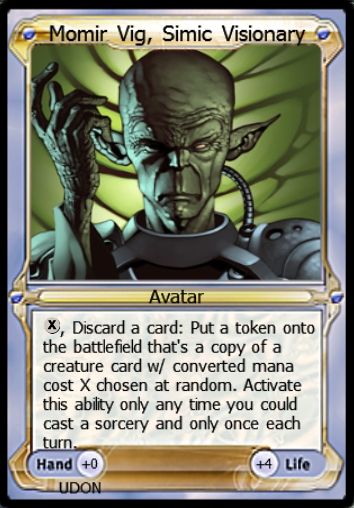
Momir Vig, Simic Visionary Avatar was an MTGO-only vanguard avatar. Momir’s ability lets you pay any amount of mana and discard a card to create a token copy of a random creature with that same mana value.
This wildly fun avatar created its own format, now known as Momir Basic. Momir Basic works just like a typical Vanguard duel except both players have access to Momir as their vanguard, and each player’s deck is entirely basic lands. The only spells each player casts are randomly determined by Momir, making this an exciting casual format with lots of surprises.
I’ve been playing Magic for a majority of my life at this point and even I get to play creatures I’ve never heard of before.
Decklist: Mishra in Vanguard
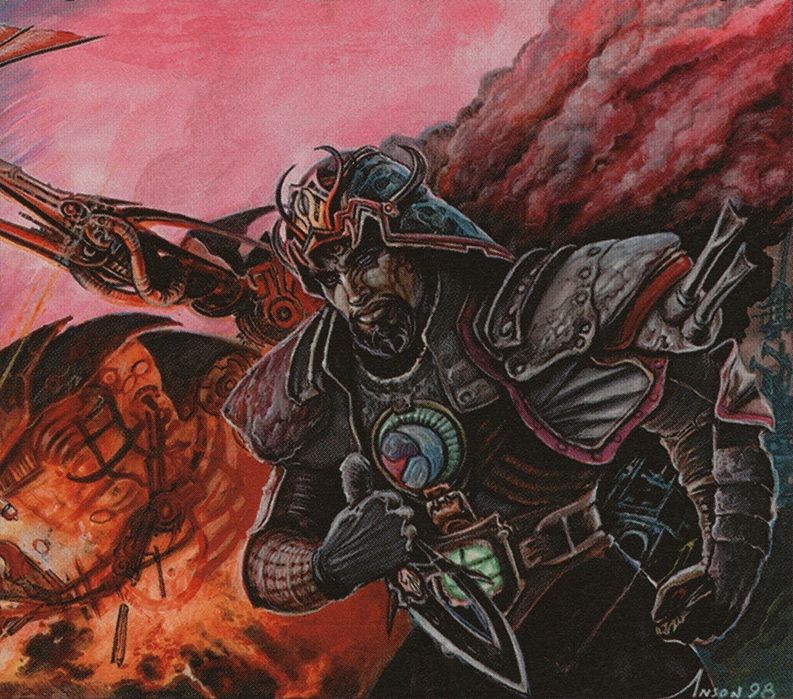
Mishra (Vanguard) | Illustration by Anson Maddocks
Vanguard (1)
Creature (28)
Ball Lightning x4
Hellspark Elemental x4
Jackal Pup x4
Keldon Marauders x4
Spark Elemental x4
Vexing Devil x4
Yidaro, Wandering Monster x4
Instant (4)
Sorcery (4)
Land (24)
Mountain x24
You’ll be hard-pressed convincing your group to abandon their EDH decks on Commander night to try out some Vanguard, but just in case you do, here’s an example Vanguard deck built around Mishra. The idea here is pretty simple: Mishra doubles the damage dealt by creatures you control, so you’re going to deal a ton of damage with your creatures.
Turn 1 you want to drop Vexing Devil and smile as your opponent elects to take a full eight damage to keep it off the field. Turn 2 you use a single Hellspark Elemental or two of your Spark Elementals to keep the pressure on. If they haven’t scooped by turn 3, bring out the Red Deck Wins classic Ball Lightning and swing in for another 14 damage.
There’s not much anyone can do to stop this deck in the first few turns!
Wrap Up
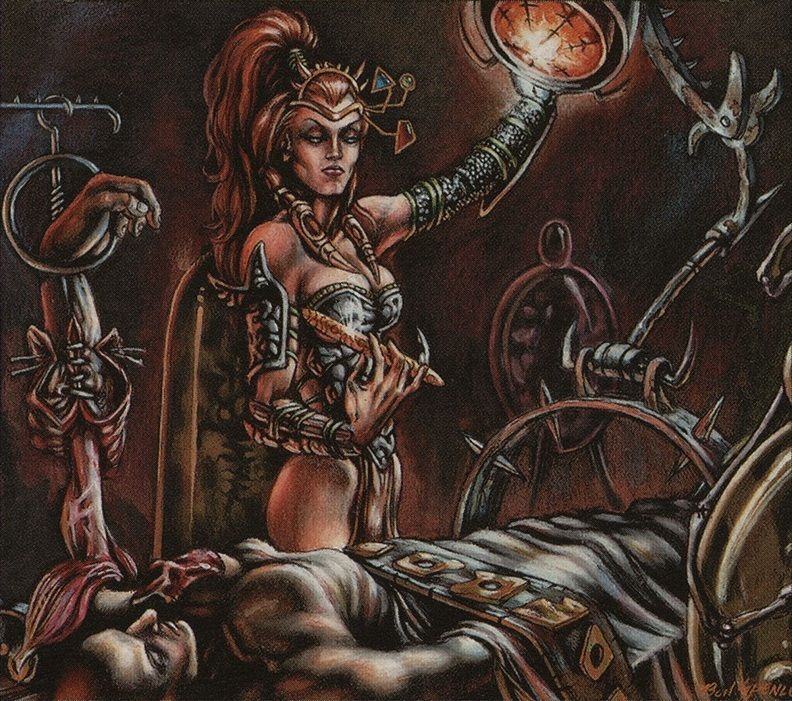
Ashnod (Vanguard) | Illustration by Ron Spencer
The vanguard cards’ power levels have a wide variance. Some, like Gix and Mirri, would be format-warping auto-includes in any normal format. Others, like Oracle, are begging for build-around decks that explore their unique mechanics. Vanguard is a casual and quirky proto-Commander format overall, mixing the crunch of Magic with the fluff in a way we probably won’t see again.
What do you think? Should WotC bring Vanguard back? Or should we start hoarding as many oversized vanguards as possible? What are some fun Vanguard deck archetypes, and what can I say to my play group to get them to build them? Let me know in the comments or over on Draftsim’s Twitter.
Thanks for reading, and keep brewing!
Follow Draftsim for awesome articles and set updates:
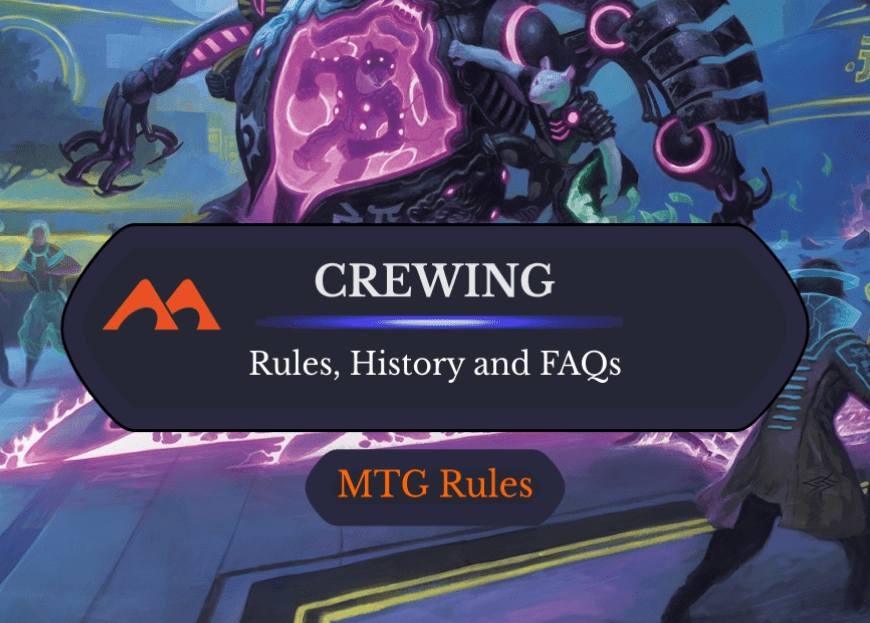
Add Comment